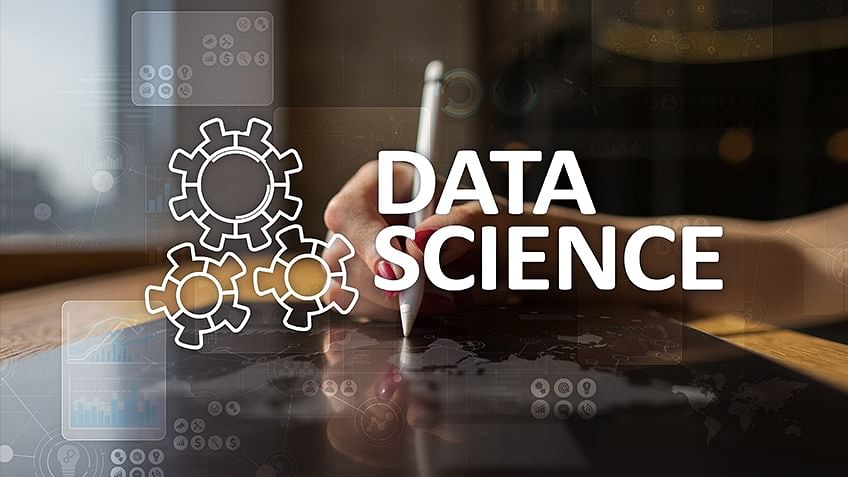-
0 Comments
Data Science
Data Science is a multidisciplinary field that involves extracting insights and knowledge from large sets of data using various techniques and tools. It combines elements of statistics, mathematics, computer science, and domain expertise to analyze and interpret data in order to make informed decisions and predictions.
Read MoreData scientists use programming languages like Python or R, along with statistical models and machine learning algorithms, to uncover patterns, trends, and correlations within the data. The insights gained from data science can be applied in various industries such as finance, healthcare, marketing, and more.
Why is data science important?
Data science is important for several reasons. Firstly, it helps organizations make data-driven decisions by providing valuable insights and predictions based on the analysis of large and complex datasets. This can lead to improved efficiency, cost savings, and better overall performance.
Secondly, data science plays a crucial role in understanding customer behavior and preferences. By analyzing customer data, businesses can personalize their products and services, target specific audiences, and enhance customer satisfaction.
Additionally, data science contributes to advancements in various fields such as healthcare, finance, and transportation. It enables researchers and professionals to identify patterns, detect anomalies, and develop innovative solutions to complex problems.
Moreover, data science helps in optimizing processes and improving efficiency. By analyzing data, organizations can identify bottlenecks, streamline operations, and make data-driven decisions to enhance productivity.
Lastly, data science is important for staying competitive in today’s digital age. With the increasing availability of data, organizations that can effectively harness and analyze it have a significant advantage over their competitors.
Overall, data science empowers businesses and individuals to make informed decisions, gain valuable insights, and drive innovation in various domains.
History of data science
The history of data science can be traced back to the early 20th century when statisticians and mathematicians began developing techniques to analyze and interpret data. However, the term “data science” itself gained prominence in recent years with the exponential growth of data and advancements in technology.
In the 1960s and 1970s, statisticians and computer scientists started exploring methods to process and analyze large datasets. This period saw the development of statistical techniques, such as regression analysis and hypothesis testing, which formed the foundation of data analysis.
In the 1980s and 1990s, with the rise of computers and the internet, data collection and storage became more accessible. This led to the emergence of data mining, a field focused on extracting patterns and insights from large datasets. Data mining techniques, such as clustering and association rule mining, became popular in various industries.
The early 2000s witnessed a significant shift in data science with the advent of big data. The proliferation of digital technologies and the internet generated massive amounts of data, requiring new approaches to handle and analyze it. This led to the development of tools and techniques for data storage, processing, and analysis, including distributed computing frameworks like Hadoop and Spark.
In recent years, machine learning and artificial intelligence have become integral parts of data science. These technologies enable the automation of data analysis and the development of predictive models. With the availability of powerful computing resources and advanced algorithms, data scientists can now extract valuable insights and make accurate predictions from vast amounts of data.
Today, data science is a rapidly evolving field that continues to grow in importance. It is being applied in various industries, including finance, healthcare, marketing, and more, to drive innovation, improve decision-making, and solve complex problems.
Future of data science
The future of data science looks promising and exciting. As technology continues to advance, the amount of data being generated is growing exponentially. This presents both opportunities and challenges for data science.
One key aspect of the future of data science is the increasing use of artificial intelligence and machine learning. These technologies are becoming more sophisticated and capable of handling complex data analysis tasks. As a result, data scientists will be able to leverage AI and machine learning algorithms to extract even deeper insights from data and make more accurate predictions.
Another important trend is the integration of data science into various industries and domains. Data-driven decision-making is becoming the norm across sectors such as healthcare, finance, marketing, and transportation. This means that data scientists will have a wide range of opportunities to apply their skills and expertise in different fields.
Furthermore, the ethical and responsible use of data will continue to be a focus in the future of data science. As concerns around privacy and data security grow, data scientists will need to ensure that they handle data in a responsible and transparent manner. This includes addressing biases in algorithms, ensuring data privacy, and maintaining ethical standards in data analysis.
In terms of technology, advancements in big data infrastructure and cloud computing will enable data scientists to process and analyze larger datasets more efficiently. This will open up new possibilities for data-driven insights and discoveries.
Overall, the future of data science holds immense potential. With the continued growth of data and advancements in technology, data scientists will play a crucial role in extracting valuable insights, driving innovation, and making informed decisions in a wide range of industries.
What is data science used for?
Data science is used for a wide range of purposes across various industries. Here are some common applications of data science:
1. Business Analytics: Data science helps businesses analyze customer behavior, market trends, and sales data to make informed decisions, optimize marketing strategies, and improve overall performance.
2. Predictive Analytics: Data science techniques are used to build predictive models that forecast future outcomes, such as customer churn, demand forecasting, or stock market trends.
3. Healthcare: Data science is used to analyze patient data, medical records, and clinical trials to improve diagnoses, develop personalized treatment plans, and identify patterns for disease prevention.
4. Finance: Data science is applied in areas like risk assessment, fraud detection, algorithmic trading, and credit scoring to make accurate predictions, manage financial risks, and optimize investment strategies.
5. Recommender Systems: Data science powers recommendation engines used by platforms like Netflix, Amazon, and Spotify to suggest personalized content, products, or services based on user preferences and behavior.
6. Natural Language Processing (NLP): Data science techniques are used in NLP to analyze and understand human language, enabling applications like chatbots, voice assistants, sentiment analysis, and language translation.
7. Internet of Things (IoT): Data science helps analyze and interpret data collected from IoT devices, enabling smart home automation, predictive maintenance, and optimization of energy consumption.
8. Transportation and Logistics: Data science is used to optimize routes, predict traffic patterns, and improve supply chain management, leading to cost savings and efficient operations.
These are just a few examples, but data science has applications in almost every industry where data is generated and can be leveraged to gain insights and make informed decisions.
What are the benefits of data science for business?
Data science offers several benefits for businesses. Here are some key advantages:
1. Improved decision-making: Data science enables businesses to make informed decisions based on data-driven insights. By analyzing large datasets, businesses can identify patterns, trends, and correlations that can guide strategic planning and decision-making processes.
2. Enhanced operational efficiency: Data science helps optimize business processes by identifying inefficiencies, bottlenecks, and areas for improvement. By analyzing data, businesses can streamline operations, reduce costs, and improve overall efficiency.
3. Personalized customer experiences: Data science allows businesses to understand customer behavior, preferences, and needs. By analyzing customer data, businesses can personalize their products, services, and marketing efforts, leading to improved customer satisfaction and loyalty.
4. Targeted marketing and advertising: With data science, businesses can analyze customer data to identify target audiences and create personalized marketing campaigns. This helps in reaching the right customers with the right message at the right time, leading to higher conversion rates and improved ROI.
5. Fraud detection and risk management: Data science techniques can be used to detect fraudulent activities and mitigate risks. By analyzing patterns and anomalies in data, businesses can identify potential fraud cases, prevent financial losses, and enhance security measures.
6. Forecasting and predictive analytics: Data science enables businesses to make accurate predictions and forecasts based on historical data. This helps in demand forecasting, inventory management, financial planning, and other areas where accurate predictions are crucial for business success.
7. Competitive advantage: By leveraging data science, businesses can gain a competitive edge in the market. The ability to effectively analyze and utilize data can lead to innovative products, improved customer experiences, and better decision-making, setting businesses apart from their competitors.
Overall, data science empowers businesses to leverage data for strategic decision-making, operational efficiency, customer satisfaction, risk management, and gaining a competitive advantage in the market.
What are different data science technologies?
There are several technologies commonly used in data science. Here are a few examples:
1. Programming Languages: Python and R are widely used programming languages in data science. They provide extensive libraries and frameworks for data manipulation, analysis, and visualization.
2. Machine Learning: Machine learning algorithms and frameworks, such as scikit-learn, TensorFlow, and PyTorch, are essential for building predictive models and making data-driven predictions.
3. Big Data Technologies: As data sets continue to grow in size, technologies like Apache Hadoop and Apache Spark are used for distributed processing and storage of big data.
4. Data Visualization: Tools like Tableau, Power BI, and matplotlib help in creating visual representations of data, making it easier to understand and communicate insights.
5. Natural Language Processing (NLP): NLP technologies, such as NLTK and spaCy, enable computers to understand and process human language, which is useful for tasks like sentiment analysis, text classification, and language translation.
6. Cloud Computing: Cloud platforms like Amazon Web Services (AWS), Microsoft Azure, and Google Cloud provide scalable infrastructure and services for storing, processing, and analyzing large amounts of data.
7. Data Mining: Data mining techniques and tools, such as RapidMiner and KNIME, help in discovering patterns, relationships, and insights from large datasets.
These are just a few examples of the technologies used in data science. The field is constantly evolving, and new technologies are emerging to meet the growing demands of data analysis and interpretation.





